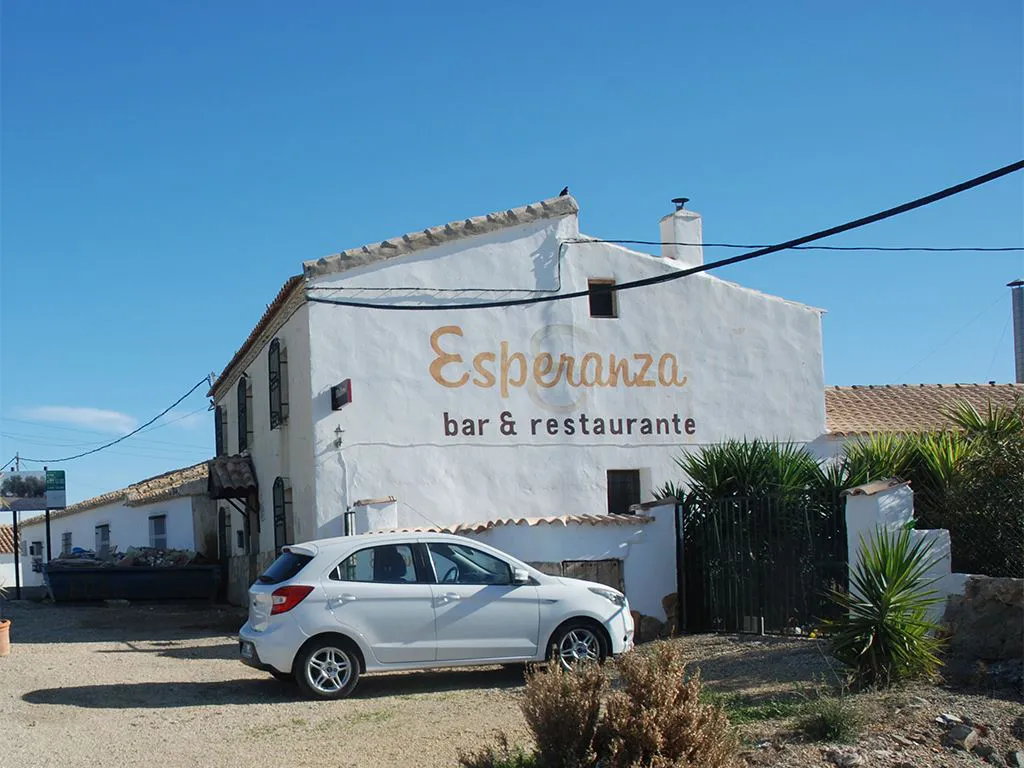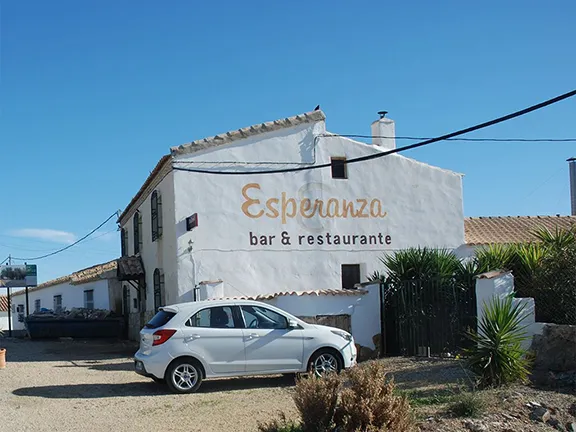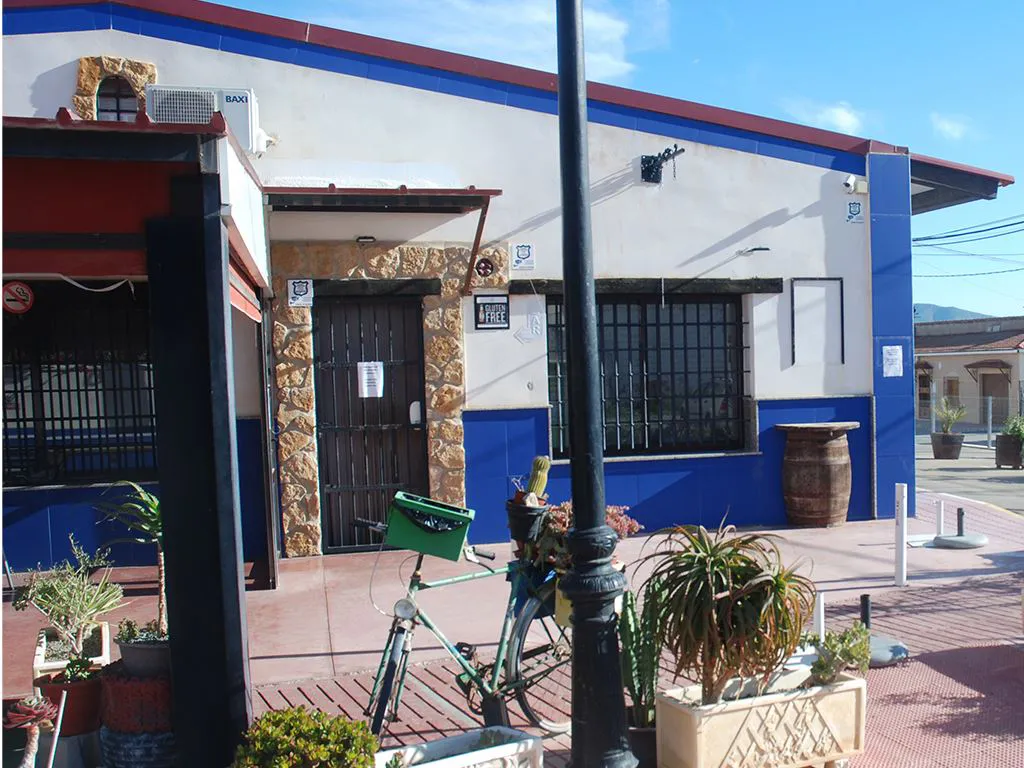The village of Urcal features in a Channel 4 episode of ‘A New Life in the Sun’ on Thursday 26th January 2023, not surprising when you consider that it enjoys over 3,000 hours of sunshine each year.
By Nick Nutter | Updated 14 Jan 2023 | Almería | Villages |
Login to add to YOUR Favourites or Read Later


I Love Urcal
Urcal is about 8 kilometres from the town of Huercal-Overa where you will find all the shops, supermarkets and weekly market that Urcal lacks. Urcal could be described as a sleepy hamlet, a little remote yet only six kilometres from the main A7 road, the Autovía del Mediterráneo. The village has that certain ‘it’ that makes Urcal a place loved by those that live there. As the signs proclaim as you enter and leave the village ‘I Love Urcal’.


Esperanza British Bar Urcal
Social life in Urcal centres around the three bars, two Spanish, and one English - Bar Esperanza. The British expat population are a reasonable proportion of the 300 or so people that live in this small village. Livestock, mainly pigs, easily outnumber residents and the surrounding agricultural land is primarily almond and olive groves.


Taberna Amazir Urcal
Urcal is at a height of 500 metres above sea level and protected from cold northerly winds by a range of mountains that top out at over 1000 metres only ten kilometres behind the village. The hills provide a dramatic backdrop. Dry barrancos thread their way down the slopes in this semi-arid area, many used as tracks to even more remote fincas and villas, but what it lacks in vegetation it more than makes up for in birdlife, particularly raptors.


Overlooking Urcal
A pair of Golden Eagles nest nearby and you may see booted eagles, and short toed eagles. If you are really lucky, there have been unconfirmed sightings of that rarest of birds, a Spanish Imperial Eagle. Kites, kestrels and falcons can all be seen hunting. The scrubby vegetation hides warblers both Sardinian and Dartford. Hoopoes are numerous, and in season, bee-eaters, rollers and goldfinch are some of the more colourful of the 300 or more species of birds to be seen in the area.


On the ground, foxes, rabbits and red legged grouse run across the roads but the biggest hazard to the motorist, particularly at dusk and dawn, are the wild boar that wander freely over the unfenced land. A solid thumping sound, heard after dark in December and January, may well be a boar butting an almond tree to eat the nuts that fall from the branches. There are also a number of less boisterous residents in Urcal, Mediterranean spur thighed tortoises.


Image by Urcal Resident Derek Gargan
Thanks to Derek Gargan we have a photograph of one of those elusive Urcal tortoise.


In the centre of the village you will find an Ethonological Museum, the Museo Etnográfico de Huércal-Overa. All the artefacts and displays have been made by local people and the brainchild behind it is a local man, Ezequiel Parra. The museum is designed to illustrate a past way of life with areas set aside for the village shop, the slaughterhouse, the bakery, the library, the barbershop, the tobacconist, and the school. Homelife is highlighted with nostalgic memories of the ice creams of childhood, music, old telephones, and typewriters, the dining room of the house, the bedroom, childhood games and early electrical goods. Outside is an area devoted to farm machinery, some of which is little altered to this day.


In the first century AD, three prominent historians of the day, Pomponius Mela, Pliny the Elder, and Claudius Ptolemy all mentioned the Roman town of Urci. To what extent each ‘borrowed’ information from the others is not known. Modern historians have surmised that Urci was situated somewhere near Almeria city or upstream of Villaricos in the Almanzora valley. What little there is known about Urci starts and finishes with the writings of those long-deceased writers, until 2005 that is when a surprising discovery was made in Urcal.
In 2005, an area of agricultural land in Urcal was earmarked for building of residential property when a Roman mosaic was found. The mosaic is constructed from small tiles called tesserae; the size of the tesserae indicates it was made after the 2nd century BC. Before that time the tiles tended to be somewhat larger. The intricate geometric pattern of the mosaic indicates it was made for a wealthy citizen, perhaps as a floor within a villa. The outer edge of the mosaic is in a pattern known as an ‘Ivy Scroll’ incorporated into another design called a ‘Wavy Ribbon’. The inner design is an angular ‘Solomon’s Knot’ within an inner border of a ‘Cable’ pattern. Only three colours of tesserae were used, red, black and white and, somewhat unusual for Roman mosaics, there are no figures of animals, gods or humans depicted. The geometric design is reminiscent of mosaics found at Carmona and Italica in Seville province that are dated to between the 2nd and 1st centuries BC. The Solomon’s Knot is also a little unusual since the knot is normally depicted with curved lines rather than sharp angles. It actually gives the mosaic a bit of a Byzantine feel to it.
The similarity of the present name of the village, Urcal, to that of the ancient Roman town of Urci, has prompted speculation that the long-lost town has been discovered. If the mosaic is Byzantine then the site at Urcal would post date Urci by about 400 years. Whether a 6th century AD Byzantine villa or the ancient town of Urci, the mosaic is a remarkable discovery in this off the beaten track village in Almeria province.